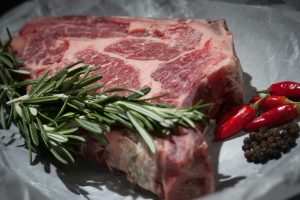Domestic markets for livestock have shown remarkable resilience amidst rising uncertainty from US President Donald Trump’s broad trade war.
On April 2, Trump sent financial markets into a tailspin with a broad, far reaching and perplexing tariff policy that appeared to punish even strong allies that the United States enjoys trade surpluses with.
Australia, with whom America enjoys a trade surplus, couldn’t avoid a flat tariff of 10% against exported goods, with grumblings within the Trump administration pointing to perceived barriers to trade in agricultural products such as beef and pork.
Trade shakedown
The tariff, announced as a retaliatory move against Australia’s long-standing restrictions on US beef imports, has raised concerns about the future of Australia’s red meat trade with one of its key export markets. Australian beef producers sent up to $3 billion per annum of mostly hamburger meat to satisfy hungry American appetites.
Industry leaders and politicians alike have warned of potential price and volume impacts.
Prime Minister Anthony Albanese described the decision as “not the act of a friend,” but ruled out retaliatory measures to avoid domestic cost-of-living impacts.
Livestock, commodity prices hold their ground
Despite the political noise and potential trade headwinds, the livestock market is yet to blink.
According to Meat & Livestock Australia’s (MLA) latest market wrap, cattle and sheep prices rose sharply in the first week of April:
- Processor Cow Indicator lifted by 33¢ to 319¢/kg lwt, the highest level since late 2022.
- Mutton prices surged by a record 119¢ to 545¢/kg cwt, driven by tight supply and strong processor demand.
- The Eastern Young Cattle Indicator (EYCI) also climbed as reduced yardings and weather events created a competitive buying environment.
This upward momentum suggests that the fundamentals of the market—tight domestic supply and sustained global demand—are outweighing immediate concerns around U.S. trade access.
Industry to adapt to shifting trade sands
Diversification of export markets has long been a focus for the Australian red meat industry and the latest developments only reinforce the need to strengthen ties with Asia, the Middle East, and emerging markets.
Travis Tobin, CEO of Livestock SA, told Sheepcentral.com that the US might feel the pinch just as much as Australia if beef imports become too expensive. “They’ve got the lowest cattle numbers in 70 years and rely on our lean beef. This tariff could backfire on American consumers as much as it hurts our exporters,” he said.
What Comes Next?
While the tariffs introduce longer-term uncertainty, many producers are taking a wait-and-see approach, with the prevailing view that Australia’s reputation for high-quality red meat—and its diversified export footprint—will help weather the storm.








